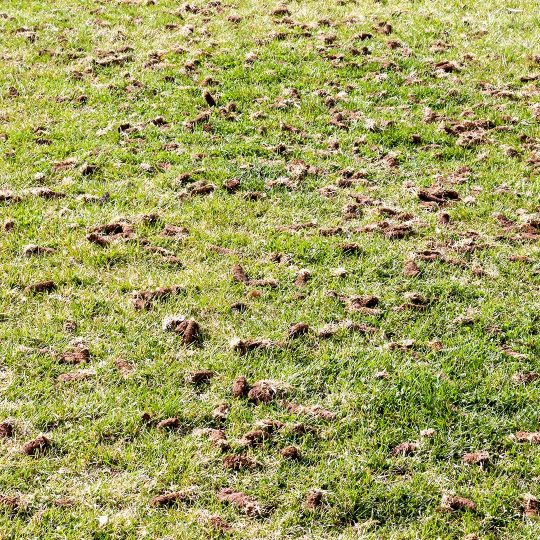How to Aerate Your Lawn
Tips and Tricks to Letting Your Lawn Breathe
Posted
September 14, 2017

Aerating your lawn is when you punch small holes in the soil to allow air, water, and other nutrients to properly penetrate the ground and feed the grass roots. This helps roots grow deeper, strengthening your lawn. Read on to learn how to aerate your lawn and alleviate compact soil.
How to Aerate Your Lawn Properly
The easiest way to aerate your lawn is to call your local lawn service to help. They will have the knowledge and equipment to do the job quickly and efficiently. However, the job is easy enough for any homeowner to tackle—with the right tools.
Lawn Aerating Equipment
There are several aeration methods:
1. Manual. Use your feet to plunge the hollow cylinders of a manual aerating tool into the soil. You can simply punch holes or remove the cores made by the tool. If you have a pair of spiked shoes, you can also accomplish a similar hole punch effect without removing the soil cores. These methods works best in small-sized lawns—the larger the lawn, the more manual labor.
2. Motorized. You can rent an automated aerator at your local lawn and garden store. These machines have a circular drum in the front or back that feature hollow cylinders or spikes. If you have a riding mower, you can also get spike or core aerator attachments.
3. Apply an ionized soil conditioner. This solution loosens clay soil particles and support microorganisms that digest thatch.
Aerating Tips
- If you’re planning to rent an aerator, keep in mind that weekends during spring and fall are the busiest times. Make your arrangements early, or aerate on a weekday and avoid crowds.
- Mark the locations of sprinkler heads, irrigation lines, septic lines, and buried utilities in your lawn before you start puncturing the ground.
- Aerate light, sandy soil in a single pass, following your typical mowing pattern. For more compacted soil, make two passes with the aerator: one following your mowing pattern, and the second at an angle.
- After aerating, you can leave the soil plugs in place to decompose. They contain microorganisms that digest lawn thatch and will eventually break apart the next time you mow the lawn.
- You can fertilize and seed lawns immediately after aerating. For heavily compacted soils, consider covering the lawn with one-quarter inch of compost and rake it into aeration holes.
- Since aeration can bring up weed seeds from lower soil levels, you may want to use an herbicide. For cool-season grasses, use a pre-emergent herbicide in the spring following fall aeration. For warm-season turf, apply the herbicide the fall after aerating. Do not apply a pre-emergent herbicide at the same time you reseed your lawn.
- Water your lawn a few extra times following aeration, especially when it’s hot and dry outside.
For more tips and tricks to aerating your lawn, contact Cardinal Lawns at 614-808-4446.
Special Offer for New Customers
Two Free Lawn Care Treatments
Hurry! Offer Expires April 15, 2025